Everybody has at least once in his or her life dreamed of travelling in time. Be it to the future or to the past. We know today (perhaps not tomorrow) that this is fairly impossible. Unless …
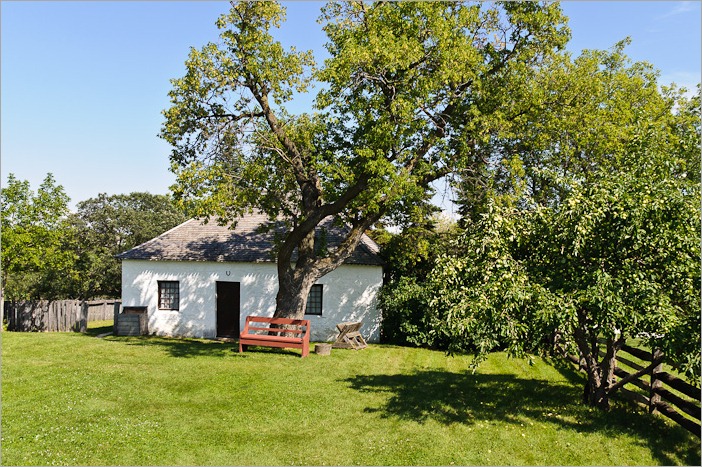 Farmhouse
Farmhouse
… you go to a museum where the modus operandi is to immerse the visitors in the past. One can do this by dressing the guides in clothes of the epoch and making them talk about daily issues of that time.
Visitors then get a better idea of life of that period. There are many such places in the world, but let’s start this journey close to home: Lower Fort Garry, Manitoba, Canada.
I have blogged about Lower Fort Garry before so I’ll try not to repeat myself. At the time, the weather was not too good to take indoor pictures, the buildings at the museum are obviously not lit with electrical light bulbs.
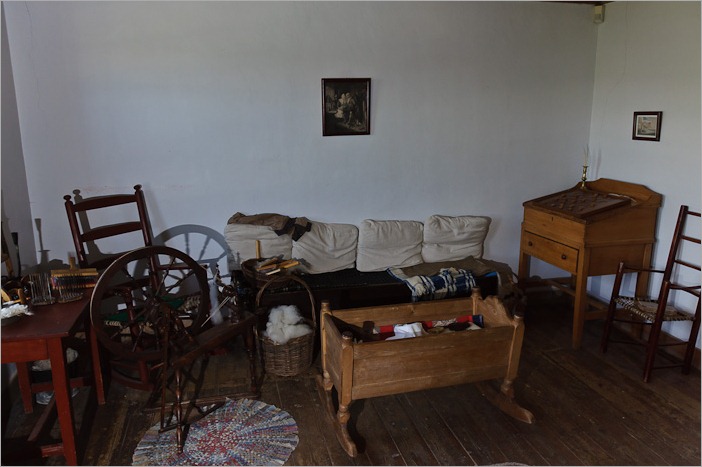 No lightbulbs but alarm systems…
No lightbulbs but alarm systems…
Having a SB-600 helps a lot for lighting and keeping it off-camera is a real bonus. Ok, you don’t all have extra speedlights, the on-camera flash also can do a pretty good job.
Lower Fort Garry was the place where the Hudson’s Bay Company did its business with the “Indians” or what are today called “First Nations”. The fort itself was not much of a military complex, the walls are so high, that in places you need a good shove in the right place and you tumble down on the other side.
Inside the fort, everything is kept as original as possible. Including the guides in costumes of the period of 1850, give or take a few years.
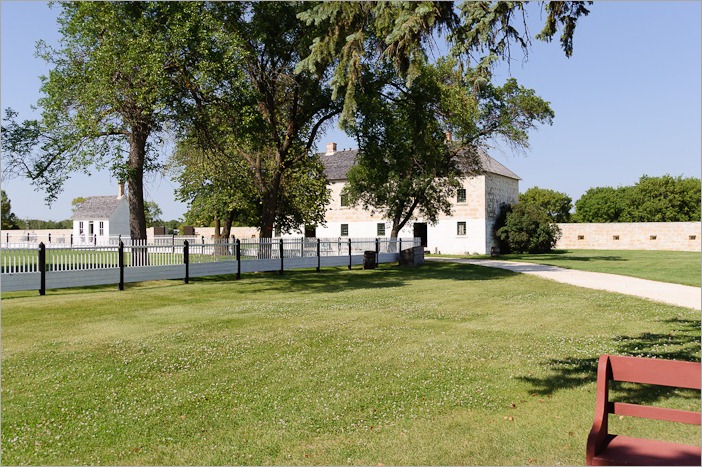 Well kept lawn, warehouse at the rear
Well kept lawn, warehouse at the rear
The lawns are well kept, as are the buildings. Obviously maintenance is a priority here. All the buildings are open for visitors and all but one is in its original state. The only building that has been modernised is the one for our personal and pressing needs…
 Guest room in the Great house
Guest room in the Great house
The Great House in the middle of the fort was the home of the governor. His spirit still roams there it seems. The big pipes you see in the above picture are for the heating. They are apparent and hot, at least in winter. Perhaps I should write it with a capital W, Winter.
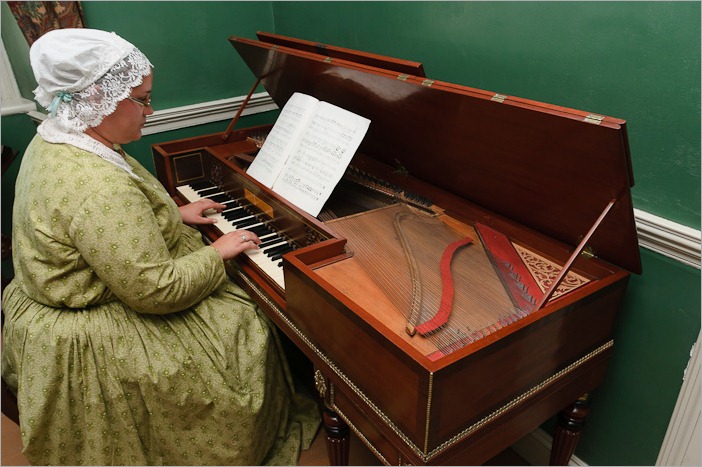 Old instrument
Old instrument
The “piano” played in the picture above is most certainly not a piano as we know it now, but more likely a kind of clavinet, it’s a little off-key but still playable as our hostess here was showing it.
Listen to it and you will know it’s not a piano…
It’s perhaps not the finest instrument today to listen to, but it’s astonishing that it is still in such a good shape.
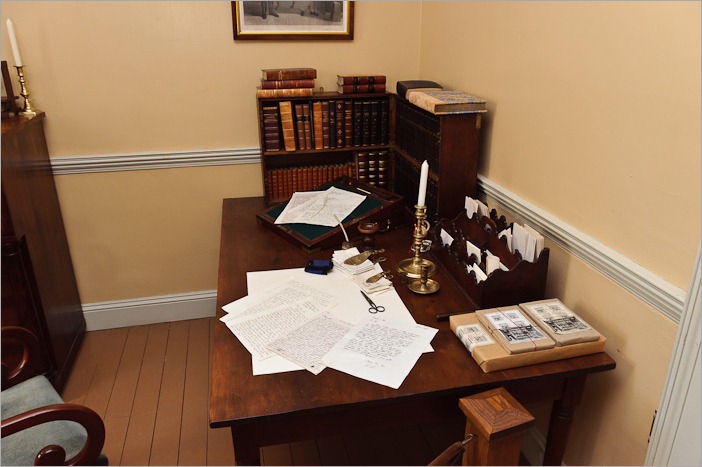 Correspondence
Correspondence
Handwritten correspondence on a desk without any kind of computer on it. I guess sometimes this seems like a dream to me. It definitely qualifies for me as a trip into the past. Not even an electric light on the desk, all by candlelight, just wonderful.
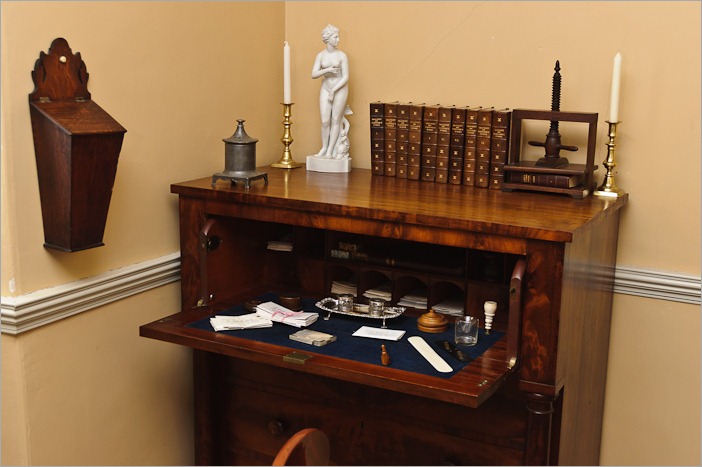 Ladies’ correspondence
Ladies’ correspondence
In the same room, another desk with ladies’ correspondence. I guess that pink ribbons were not usual wrappers around real business documents used by the HBC… The “book press” you see on the top of this desk has nothing to do with a press. It is an old fashioned copier for book pages. Using a chemical and nearly transparent paper, you could press a page from a book and so take an imprint of that page. Obviously it was then mirrored, but since the paper was nearly transparent, the copy was perfectly readable from the other side.
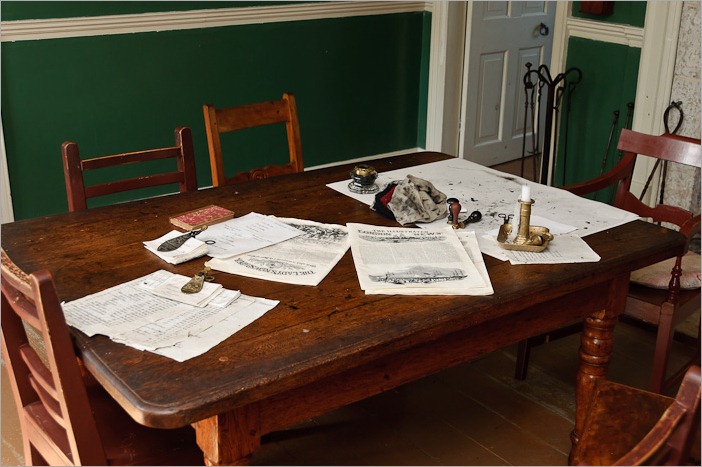 Office in the guesthouse
Office in the guesthouse
The guesthouse or part of the house reserved for guests had less flamboyant furniture. Nevertheless it is still perfectly functional. I guess chairs and tables never go out of style.
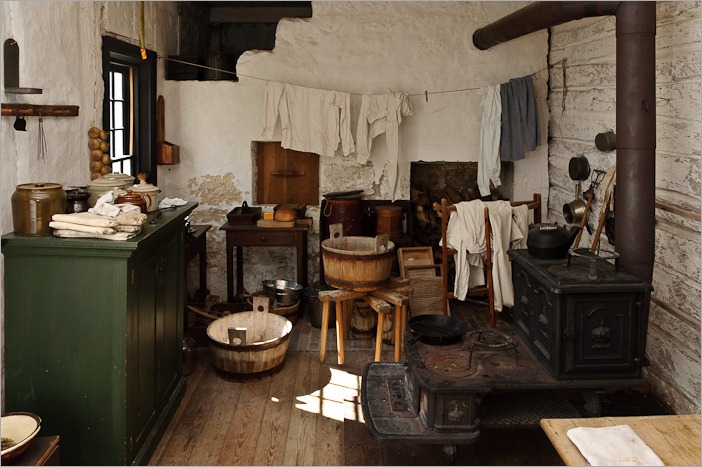 Kitchen in the “Men’s House”
Kitchen in the “Men’s House”
Of course the standard falls far lower when you arrive at the “Men’s House” or the house where the workers were sleeping. As far as I can see, this was looking like the kitchen pictures of my grandparents’ house, early last century. A part from the obvious untidiness that is.
The warehouse, seen in the third picture of this post (the one with the well kept grass) also now has a lot of stuff in store, apparently ready for sale or for shipping, according to the guides of the museum.
 Warehouse stuff
Warehouse stuff
This time we had a little less conversation with the guides. That was the result of arriving at the museum around 4pm, while closing time was set at 5pm… Not much time to look into everything.
The first picture of this post is a small house, outside of the fort walls and made to have a well kept garden, full of vegetables. Today there is not much visible, but from what I was told, the harvest of this little patch is totally organic and the guards still can take it home with them.
 Harvest soon
Harvest soon
The house itself reminds me of the houses I saw in Ukrainian villages, whitewashed and rather low. I guess that will be a subject of a (near) future post; next time I’ll be writing from Ukraine. Although the place I’ll be writing from will have electricity enough to get that on the internet…
More time travels to come!
